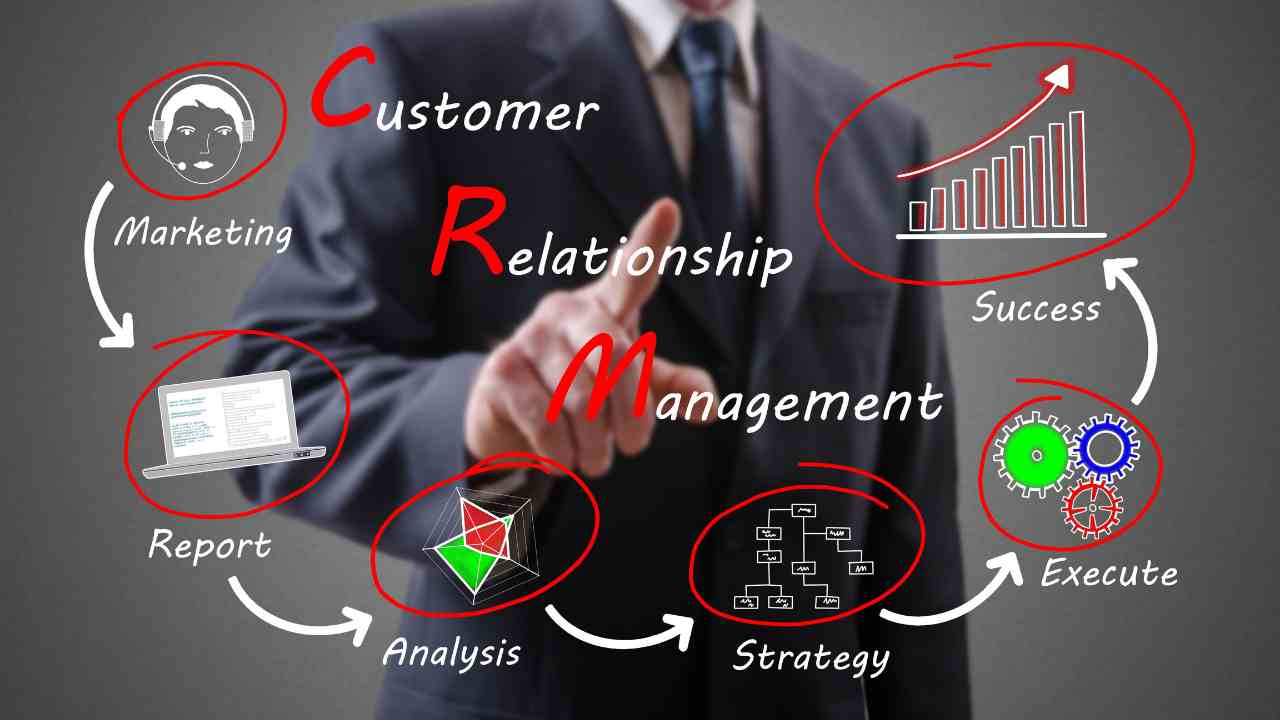Strategies for Implementing a CRM System

Customer Relationship Management (CRM) systems have become an essential tool for businesses of all sizes. These systems help companies manage their interactions with customers, streamline sales processes, and improve overall customer satisfaction. However, implementing a CRM system can be a complex and challenging task. In this article, we will explore strategies for successfully implementing a CRM system, including the importance of planning, selecting the right system, training employees, and measuring success.
The Importance of Planning
Before diving into the implementation process, it is crucial to develop a comprehensive plan. Planning allows businesses to define their goals, identify their needs, and determine the scope of the CRM system implementation. Here are some key steps to consider during the planning phase:
- Define your objectives: Clearly outline what you hope to achieve with the CRM system. Whether it’s improving customer retention, increasing sales, or enhancing customer service, having clear objectives will guide your implementation strategy.
- Assess your current processes: Evaluate your existing sales and customer service processes to identify areas that need improvement. This assessment will help you understand how the CRM system can address these pain points.
- Involve key stakeholders: Engage key stakeholders, such as sales managers, customer service representatives, and IT personnel, in the planning process. Their input and feedback will ensure that the CRM system meets the needs of all departments.
- Set a realistic timeline: Implementing a CRM system takes time and effort. Set a realistic timeline that considers the complexity of your business processes and the availability of resources.
Selecting the Right CRM System
Choosing the right CRM system is crucial for successful implementation. With numerous options available in the market, it is essential to consider your business requirements, budget, and scalability. Here are some factors to consider when selecting a CRM system:
- Identify your specific needs: Determine the features and functionalities that are essential for your business. For example, if you have a large sales team, you may need a CRM system with robust sales automation capabilities.
- Consider integration capabilities: Assess the CRM system’s ability to integrate with your existing software and tools. Seamless integration will ensure a smooth flow of data between systems, eliminating the need for manual data entry.
- Evaluate scalability: Choose a CRM system that can grow with your business. Consider factors such as the number of users, data storage capacity, and the ability to add new features as your business expands.
- Read reviews and case studies: Research and read reviews from other businesses that have implemented the CRM system you are considering. Case studies can provide valuable insights into the system’s effectiveness and potential challenges.
Training Employees
Implementing a CRM system requires proper training to ensure that employees can effectively use the system and maximize its benefits. Here are some strategies for training employees:
- Provide comprehensive training: Offer training sessions that cover all aspects of the CRM system, including data entry, reporting, and customer interaction management. Tailor the training to different user roles and provide ongoing support.
- Encourage user adoption: Communicate the benefits of the CRM system to employees and highlight how it will make their jobs easier. Address any concerns or resistance to change and emphasize the positive impact it will have on their productivity and performance.
- Offer hands-on practice: Allow employees to practice using the CRM system in a safe environment. Provide real-life scenarios and encourage them to explore different features and functionalities.
- Provide ongoing support: Establish a support system to address any questions or issues that arise after the initial training. This can include a dedicated help desk, online resources, or regular check-ins with a CRM system administrator.
Measuring Success
Measuring the success of your CRM system implementation is crucial to ensure that it is delivering the desired results. Here are some key metrics to consider:
- Customer satisfaction: Monitor customer satisfaction levels to gauge the impact of the CRM system on customer interactions. Conduct surveys, track customer feedback, and analyze customer retention rates.
- Sales performance: Measure the impact of the CRM system on sales performance. Track metrics such as lead conversion rates, sales cycle length, and revenue generated to assess the system’s effectiveness in driving sales.
- User adoption: Monitor user adoption rates to ensure that employees are effectively using the CRM system. Low adoption rates may indicate the need for additional training or system improvements.
- Efficiency improvements: Assess the efficiency gains achieved through the CRM system. Measure factors such as time saved on administrative tasks, reduction in manual data entry, and improved collaboration between departments.
Get Your FREE 14-Day Trial and Take Your Business To The Next Level with an All-In-One Sales and Marketing Platform for businesses, agencies and marketers.
Implementing a CRM system can significantly improve a company’s sales and customer service processes. By following a well-planned strategy, selecting the right system, training employees, and measuring success, businesses can ensure a successful CRM system implementation. Remember to consider the specific needs of your business, involve key stakeholders, and provide ongoing support to maximize the benefits of the CRM system. With the right approach, a CRM system can become a valuable asset for small businesses, agency owners, and marketers.
For an all-in-one sales and marketing platform designed specifically for small businesses, agency owners, and marketers, consider using SaasExpert.ca. This platform offers a comprehensive CRM system along with other essential tools to streamline your sales and marketing processes.
Learn more about “How to successfully install CRM Software” right here.
Frequently asked questions about Strategies for Implementing a CRM System.

What are the foundational steps to lay down a successful CRM implementation strategy? 🌱
Setting the stage for a fruitful CRM journey requires thoughtful groundwork. First, outline clear objectives tailored to your business needs, be it lead tracking, improving customer service, or boosting marketing campaigns. Engaging key stakeholders early on ensures alignment and fosters commitment. Conduct a thorough business process review to understand existing workflows and how they’ll change post-CRM. Also, identify potential challenges and establish a roadmap, highlighting milestones, and timelines. Think of this strategy as building a house: you need a solid blueprint before laying the first brick. 🏡🔍
How important is it to involve my team during the CRM implementation process? 🧑💼
Involving your team is absolutely crucial! They are the frontline users and will provide insights that can shape the CRM’s success. Engage them from the start: gather their input on what features are essential, their pain points with current systems, and any apprehensions they might have. Once selected, provide comprehensive training to ease the transition. Regular check-ins post-implementation help address challenges and gather feedback. A collaborative approach ensures that the CRM isn’t just another tool, but an integrated part of the team’s workflow. Unity in implementation leads to harmony in operation! 🤝💼
Can you shed light on data management strategies during CRM implementation? 🖥️
Ah, data – the lifeblood of any CRM! Proper data management is pivotal. Begin by auditing your existing data sources. Cleanse this data by removing duplicates, correcting inaccuracies, and standardizing formats. Establish guidelines for future data entry to maintain this cleanliness. When migrating data to the new CRM, it’s wise to conduct test imports to ensure accuracy and compatibility. Regular backups can’t be stressed enough; they safeguard against potential losses. With the right data strategies, your CRM can become a reservoir of meaningful, actionable insights. Dive in with confidence and clarity! 🌊📈
What about the post-implementation phase? Any strategies for that? 🚀
Post-implementation is where the real journey begins! Continual assessment is key. Set up metrics to measure CRM’s impact on sales, customer satisfaction, and operational efficiency. Regular feedback sessions with your team will provide insights into what’s working and what’s not. Adjust strategies based on these insights. And remember, the CRM space is dynamic, with constant updates and new features. Stay abreast of these developments and consider periodic refresher training sessions. Think of your CRM like a garden; with regular care and tending, it’ll flourish! 🌺📊
Is customization a wise strategy for CRM implementation? ⚙️
Customization can be both a boon and a bane. While it’s tempting to tailor a CRM to your exact needs, it’s essential to tread carefully. Start with the out-of-the-box features; you might be surprised at how much they already align with your needs. If you do opt for customization, ensure it genuinely adds value and doesn’t overly complicate the system for users. Remember, every custom feature can add to future upgrade complexities. Strive for a balance: a system that’s bespoke enough to serve your unique needs, yet streamlined enough for ease and scalability. It’s an art and a science! 🎨🔬
Embarking on a CRM journey is exhilarating. With the right strategies, the path becomes smoother and the destination attainable. As always, we’re here to guide, advise, and illuminate the way! 🌟🛤️







